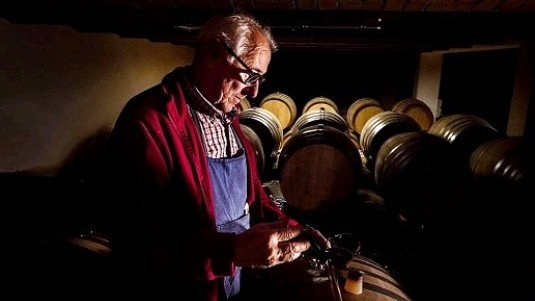Luciano Sandrone’s wines mirrored his good-natured, kind and cheerful personality. He was someone who was not out to teach anything to anyone but only to make wines that reflected their origin using clean and precise methods.
Another friend is gone. Luciano Sandrone was a reserved man and no one knew he was ill, which made his passing not only unexpected but also, if possible, even sadder.
I had known him since 1982, having been introduced to him by Carlo Petrini and Gigi Piumatti, who at the time were distributing his wines along with those of Elio Altare and Bartolo Mascarello for Cooperativa I Tarocchi, which later gave birth to Arci Gola and, later, Slow Food. In fact, I first met Carlo outside the Cavour 313 wine shop while he was unloading Sandrone’s wines from a van he had driven all the way from Bra to Rome. We then tasted them, together with Andrea Gabbrielli who was one of the shop’s owners at the time, and found his 1981 Dolcetto to be extraordinary and the wine soon became one of the shop’s mainstays.
Being in the area, Sandrone also began making Barolo using the innovative methods typical of the group of the so-called Barolo Boys. The others, including Domenico Clerico, Altare and Giorgio Rivetti, in particular, used to say that Luciano never missed a mark, that his wines were perfect. He had a vineyard, Cannubi Boschis, and in 1984, not a particularly good year, produced a wine from it that was surprisingly good, considering the circumstances, and this led him to start putting the vineyard’s name on the label, creating a cru that would soon be legendary.
His vintage 1989 was extraordinary and all the leading international critics wrote about it, with Robert Parker consecrating it. And even we at Gambero Rosso/Slow Food gave it a prize in our guide writing about it with high praise. All things considered, Luciano’s wines mirrored his good-natured, kind and cheerful personality. He was someone who was not out to teach anything to anyone but only to make wines that reflected their origin using clean and precise methods. He also found that the characteristics of Cannubi, among the most balanced from Barolo, were perfect for him.
I had not seen him for several years and the last time was at a pre-pandemic Vinitaly where he explained to me how, as of 2013, he had removed the name of the vineyard from his Barolo label in order to dedicated it to his grandchildren Alessia, Luciano and Stefano, using the acronym Aleste, the name it still carries today. It remains a magnificent, balanced and elegant wine with a smile, just like he was. Ciao Luciano.




